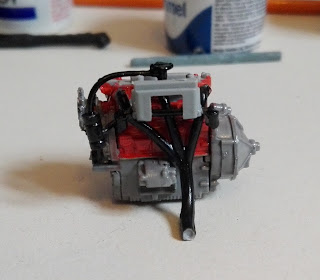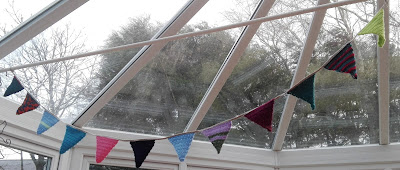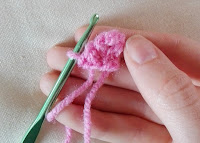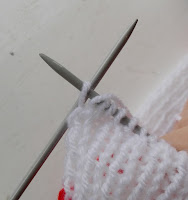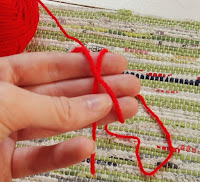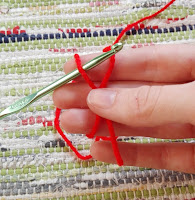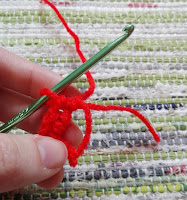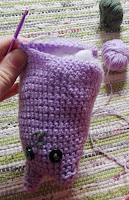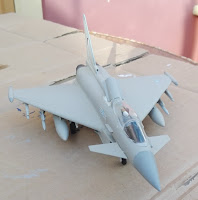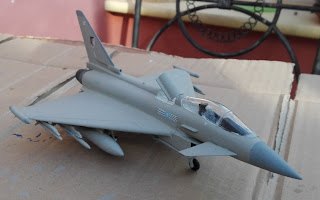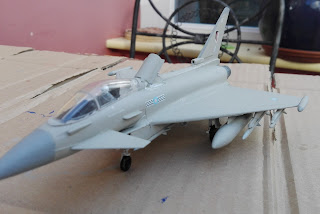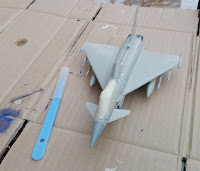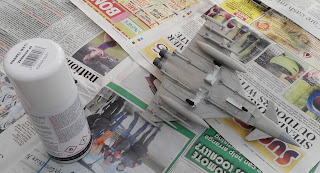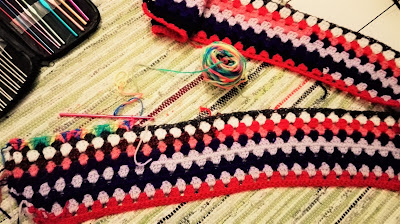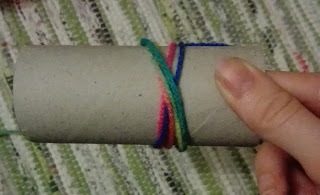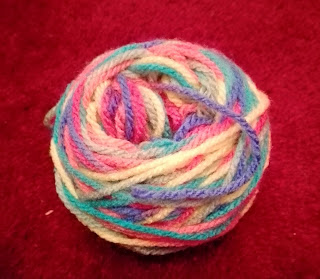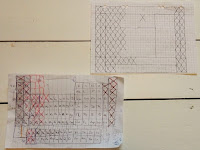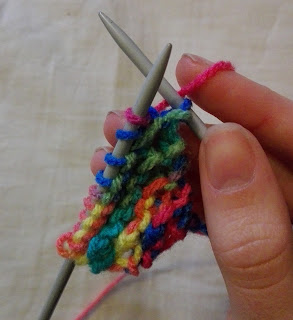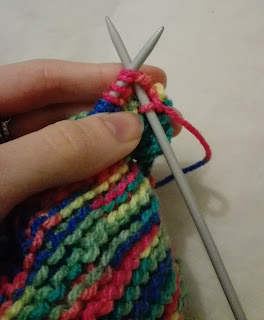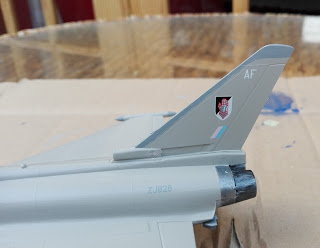Recently I decided to try out a new crochet stitch, and to use up some of my sneaky yarn stash, which is getting increasingly bigger!
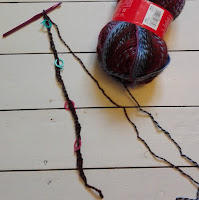 |
Foundation chain with stitch markers
to help keep count |
So I came across the shell and chains pattern and it is a crochet pattern with shells, but is not as tight, and a bit more hole-y then the normal shells pattern. I used a chunky and variegated yarn from my stash, as it looked the nicest to make a snood out of. Although from this experience I don't think that a variegated yarn is the best for this pattern!
I started off with a chunky yarn and a 6.5mm hook, but this pattern can be done with any yarn and the appropriately sized hook.
The foundation chain should have a multiple of 6 chains and then another two.
I have chained 50 (8 x 6, + 2), this gave me a snood which is 125cm long which I have sewn together at the ends to create the snoodness.
 |
| Row 1 Complete |
Here is the pattern:
Chain 50
Row 1: 1 dc in 2nd ch from hook, *miss next 2 ch, 1dc, (1tr, 1ch, 1tr, 1ch, 1tr) in next ch, repeat from * to the end of the row then turn.
Row 2: 4ch, 1tr in first stitch (The 4ch counts as one treble crochet and one chain), miss next tr, 1dc in next tr (this is the centre tr of the shell), *(1tr, 1ch, 1tr, 1ch, 1tr) in the next dc - between the shells - miss next tr, 1dc in centre tr, repeat from * and end with (1tr, 1ch, 1tr) in the last dc and turn.
Note: I found when chaining 4 for the second row it helped to keep a stitch marker in the third chain, which acts as the first treble, then I know without confusion where to end the third row!
 |
| Stitch marker in third chain |
Row 3: 1ch (this doesn't count as a stitch!), 1dc in first tr, *(1tr, 1ch, 1tr, 1ch, 1tr) in the next dc, miss the next tr, 1dc in next tr, repeat from * until end, once the last dc has been made, 4ch for the next row.
Repeat rows 2 and 3 continuing the pattern.
For my snood I used a whole 200g ball of chunky wool, but the work measured 125cm (49 in), which is plenty long enough for a snuggly snood for a woman. By repeating row 2 and 3 you can create the snood as small or as large as you wish.
Once the snood is to length, cut a large tail from the ball, and pass it through the last remaining loop to fasten the work. Use this long tail to sew the two ends of the snood together, or if you wish make the pattern long enough to make into a scarf, then you can keep the nice scalloped edge you have created.
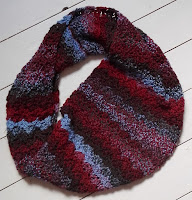 |
| Finished Snood |
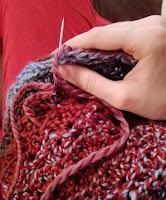 |
| Sewing the ends together |
From my experience making this snood, I do not think that using a variegated chunky yarn is really the best way of bringing out the shape of the pattern, this I think would be done much better by using a thinner plain yarn, like double knit, and perhaps even changing colours each row. But we live and we learn!

